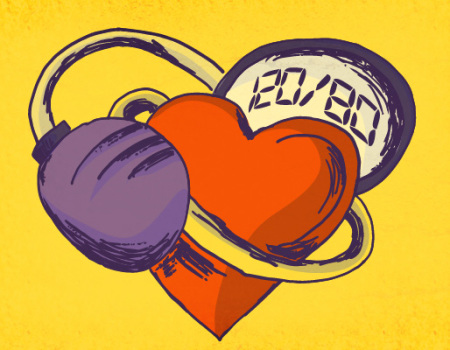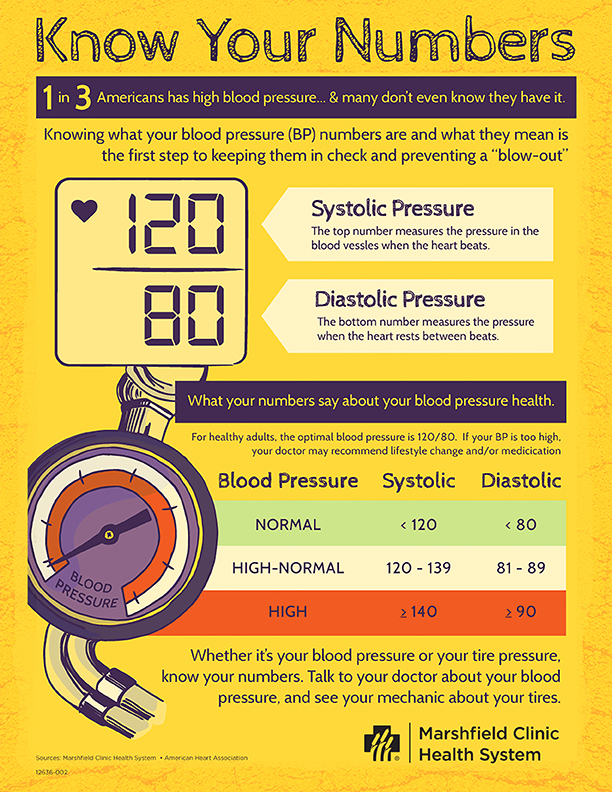 If you’ve been to the doctor lately, you’ve probably heard about your blood pressure, especially if it’s approaching or already over 140/90.
If you’ve been to the doctor lately, you’ve probably heard about your blood pressure, especially if it’s approaching or already over 140/90.
But what does high blood pressure really mean? Dr. Brandon Parkhurst, a family medicine physician at Marshfield Clinic, offers a comparison to a grossly over-inflated tire.
Driving consistently with an over-inflated tire will cause long-term wear and tear to the tire,” he said. “In a similar way, high blood pressure causes wear and tear on your arteries, causing them to stretch and ultimately weaken.”
That can contribute to a variety of chronic problems, such as heart attacks, kidney disease, eye diseases and others.
Problems with your arteries – and an over-inflated tire – also can cause a catastrophic failure.
In your body, that could take the form of an ischemic stroke, caused by a blood clot that blocks or plugs a blood vessel in the brain. The other kind of stroke, a hemorrhagic stroke, occurs when a blood vessel breaks and bleeds into the brain. Either kind is deadly serious.
In your car, an over-inflated tire can overheat, causing a blow-out that can be just as life-threatening.
Know your numbers
High blood pressure and over-inflated tires share something else: they’re hard to spot.
High blood pressure is often called a silent killer because it causes no symptoms on its own. And even the most experienced auto mechanic probably can’t spot an over inflated tire. Both require a measuring device.
Almost every routine doctor’s office visit includes a blood pressure test. It’s always measured with two numbers; the first, or top number, is the systolic pressure with the heart beating and the second or bottom number is the diastolic pressure with the heart resting between beats.
For healthy adults, the optimal blood pressure is 120/80. Anything between those numbers and 139/89 is considered high-normal.
A reading of 140/90 is the threshold for high blood pressure, the level where your doctor will recommend lifestyle changes and/or order medication.
For most people over age 75, a blood pressure reading up to 150/90 is considered acceptable. Learn more about blood pressure goals.

Tire pressure recommendations vary widely. Consult your service adviser or owner’s manual for that information.
American Heart Association recommendations for healthy blood pressure
| Blood Pressure | Systolic | Diastolic | |
| Normal | less than 120 | and | less than 80 |
| Prehypertension | 120 – 139 | or | 80 – 89 |
| High Blood Pressure (Hypertension) Stage 1 | 140 – 159 | os | 90 – 99 |
| High Blood Pressure (Hypertension) Stage 2) | Higher than 180 | or | 100 or higher |
| Hypertensive Crisis (Emergency care needed) | Higher than 180 | or | Higher than 110 |






Leave a Reply